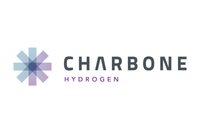The US is uniquely positioned to capitalize on the rising demand and subsequent rising prices for natural gas by repositioning itself solidly as a natural gas exporter.
Natural gas is a naturally occurring hydrocarbon gas mixture that consists of methane and various amounts of other higher alkanes. It is found either by itself or with oil, and is considered to be an important element in the clean energy movement due to its safety and important applications.
The price of natural gas has risen significantly over the past 12 months, reaching over US$5 per MCF in early September. This price jump comes after a low of US$1.60 MCF during the initial shock of the COVID-19 pandemic.
In this article, we’ll discuss why an investment in natural gas should be on your radar, what’s driving recent price increases, overall demand, and a few key players.
International natural gas exports influencing US prices
Historically, the price of natural gas in North America has been largely driven by domestic demand factors prior to having any method to export from the continent. In the US specifically, natural gas is primarily used to generate electricity, residential and commercial heating as well as some industrial use.
Today, the price of natural gas is impacted by global exports to supply international markets. The US has built significant liquefied natural gas (LNG) supply chains, allowing it to access new and larger natural gas markets in Europe and Asia –– both of which have recently faced large shortages. In addition, significant new pipeline export markets have opened up to the US Gulf Coast area in Mexico.
As a result, natural gas sourced from the US –– specifically from the Gulf Coast –– is now a global commodity as opposed to simply a domestic North American commodity. These new and larger markets are expected to create a long-term increase in demand for US natural gas which is expected to drive prices even higher.
Demand for natural gas is expected to grow
The breakdown of consumption for natural gas in the US is 15 percent from residential, 10 percent from commercial, 27 percent from industrial and 38 percent from electric power generation.
Demand for natural gas through exports has surged due to pipeline exports which have tripled over the past decade to 76.1 billion cubic meters (BCM) and LNG exports which have grown from 1.5 BCM in 2010 to 61 BCM in 2021. Pipeline exports and LNG exports combined are quickly on track to account for 10 percent of natural gas consumption from the US. Experts project that with several new active construction projects, the US LNG export capacity will reach an impressive 20 BCF per day in the mid-2020s.
For the past 10 years, the US has also been phasing out coal-fired power and replacing it with natural gas. The natural gas switch has resulted in a one-to-one switch in Indiana and Kentucky and a 50 percent switch in other states. Additionally, significant nuclear power is being permanently taken offline in the next five to 10 years in the US. Nuclear plants have often been replaced mainly by natural gas in the past and this can be expected to continue in the coming years.
At the current pace, the projected supply gap over the next 10 to 15 years due to these power source changes will likely not be met by renewables. This leaves natural gas in the position to increase its market share for power supply in the macro bullish case for long-term pricing.
Another key factor impacting demand, and ultimately the price of natural gas, is the rise of electric vehicles. For every 1 percent conversion of combustion engine vehicles to electric vehicles in the US, there will be an overall power demand increase of 0.7 percent for natural gas. This could be a real game changer for natural gas demand in the US.
Key players in the US natural gas industry
EQT (NYSE:EQT) is the largest producer of natural gas in the US. The company has established operations in multiple locations in the US including Pennsylvania, West Virginia and Ohio with developments in the Appalachian Basin currently underway. EQT has proved reserves of 19.8 trillion cubic feet. The company’s average daily production of natural gas was 3.982 billion cubic feet in 2019.
ExxonMobil (NYSE:XOM) is the second-largest producer of natural gas in the US and is one of the largest producers in the world. The company has established operations in Europe, Asia, and Australia. The company’s worldwide proved reserves total approximately 15 billion oil equivalent barrels, including 60 percent oil and 40 percent natural gas. ExxonMobil’s average daily production of natural gas was 2.778 billion cubic feet in 2019.
A company that is positioned for growth in the US natural gas market is Southern Energy (TSXV:SOU,LSE:SOUC), which has recently listed its shares in London, UK to access the global equity markets. The company is an established oil and gas producer with interests in over 230 net producing wells in the Southeastern US. The company delivers shareholder value by focusing on conventional, low-decline, long-life assets in fields with an abundance of infrastructure, low operating costs and premium commodity pricing.
The company currently has controlling operating interests in properties covering approximately 30,000 net acres in the Mississippi Interior Salt Basin which is one of the most productive basin in the Gulf Coast Region. According to the company’s most recent corporate presentation, management is targeting significant production growth in excess of 25,000 barrels of oil equivalent per day of primarily US Gulf Coast natural gas production in the next few years.
Investor takeaway
The US is uniquely positioned to capitalize on the rising demand and subsequent rising prices for natural gas by repositioning itself solidly as a natural gas exporter. With Asian LNG import prices currently topping US$20 per MMBtu, it is expected that the US will continue to set record natural gas exports, something that Canada has failed to capitalize on. As a result, investors will likely be interested in US natural gas companies like Southern Energy with diverse and abundant natural gas resources with the potential for significant growth.
This INNSpired article was written as part of an advertising campaign for a company that is no longer a client of INN. This INNSpired article provides information which was sourced by INN, written according to INN's editorial standards, in order to help investors learn more about the company. The company’s campaign fees paid for INN to create and update this INNSpired article. INN does not provide investment advice and the information on this profile should not be considered a recommendation to buy or sell any security. INN does not endorse or recommend the business, products, services or securities of any company profiled. If your company would benefit from being associated with INN's trusted news and education for investors, please contact us.
- 10 Natural Gas Facts for Investors | INN ›
- Oil and Gas Outlook 2022: Uncertainty and Risk to Drive Prices | INN ›
- Top 10 Oil-producing Countries | INN ›





